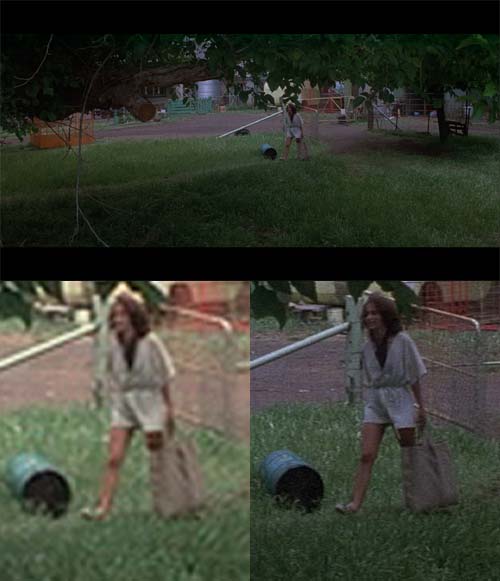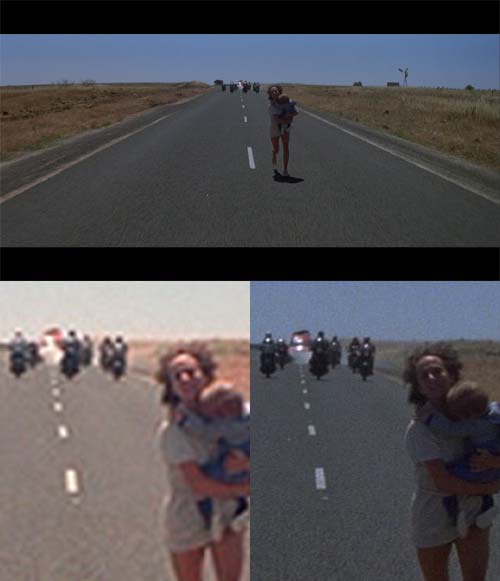 Picture:
Picture:  Sound:
Sound:  Extras:
Extras: 
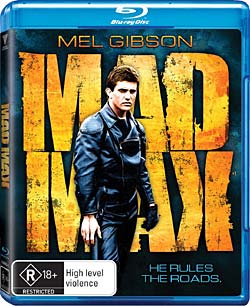
Download scan of review (JPEG, right click, Save As)
Movie:  Picture:
Picture:  Sound:
Sound:  Extras:
Extras: 
But of course, there could be no Mad Max 2 without Mad Max. And even though the voters of IMDB prefer the later movie by a large margin (7.6/10 to 6.9), there's something about the purity and rawness of the first one that I find attractive. This establishes Max's motivation that drives him through two sequels.
 But, to be fair, it is a mixture. Much of the stunt work is first class, and makes you wonder whether the drivers survived. Goose's motorcycle speedo really does seem to be registering 180km/h shortly before his crash. At times the photography looks startlingly fresh and sharp, encompassing wide vistas of out-of-town Victoria.
But, to be fair, it is a mixture. Much of the stunt work is first class, and makes you wonder whether the drivers survived. Goose's motorcycle speedo really does seem to be registering 180km/h shortly before his crash. At times the photography looks startlingly fresh and sharp, encompassing wide vistas of out-of-town Victoria.
Sometimes the frames suffer from a touch of softness or, once or twice, reduced contrast, and a touch of banding in the colour density. But overall, it really looked rather nice. A mighty 32Mbps MPEG4 AVC transfer ensured that the disc captures the film to perfection.
Note, also, that the DVD version suffered from a problem in which the two fields constituting each frame were reversed in sequence, so in effect its resolution was even lower much of the time than was the norm for 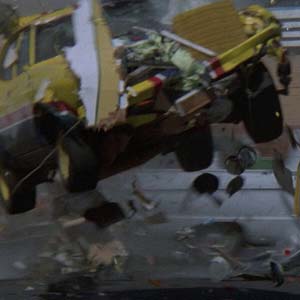 DVD. This Blu-ray, by comparison, simply looks lovely. And check out the fluorescent sign above the 'Nat Nancy's' diner from which the Goose departs during the big chase scene at the start. I don't think I've seen that colour on any other movie.
DVD. This Blu-ray, by comparison, simply looks lovely. And check out the fluorescent sign above the 'Nat Nancy's' diner from which the Goose departs during the big chase scene at the start. I don't think I've seen that colour on any other movie.
The biggest weakness of the movie is the sound. Partly it is poor judgement in the incidental music, which is dramatically overblown to the point of irritation. It sounds like something from the late 1940s. The sound quality itself is also no more than adequate. There's plenty going on, but it seems to be restricted in dynamic range to that necessary for the original presentation in mono on an optical track. Some broadening of the image has been achieved in this 5.1 channel mix, but there's not a whole lot of surround.
Extras? Well, not much there. Mostly photos and text panels. There is an alternate sound track entitled 'US Dubbed Dolby Digital Mono'. When this movie was released in the US in 1980 by American International Pictures, it was apparently dubbed with American voices to remove the Australian accents. However it soon became clear that this is not the US dubbed version. I'm told by Roadshow that this 'has some minor word replacements for some of the more colloquial Australian dialogue'. Which is a pity.
Because the US theatrical trailer, provided on this disc, hints at what a hoot it would have been to watch this movie with that dub.
 (Australian rating); Region free
(Australian rating); Region free
The following video bitrate graph was generated by BDInfo 0.5.7:
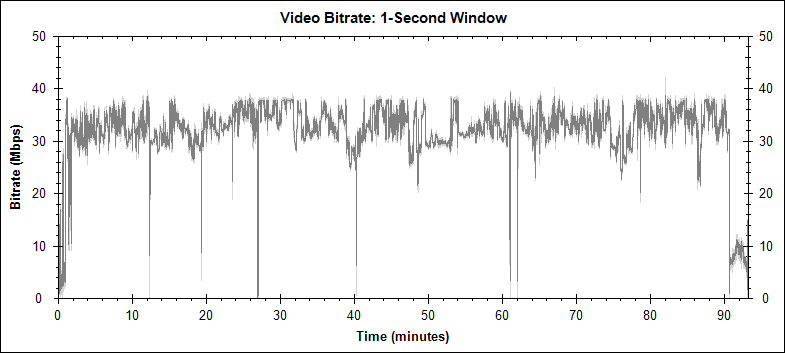
Here are some comparisons between the Australian PAL DVD and the Australia Blu-ray version of this movie. The Blu-ray was supplied to me by Roadshow Entertainment. The PAL DVD was the one released some years ago by Roadshow. Because of the DVD's interlacing problem I had to deinterlace the frame grabs from this DVD. I simply applied Adobe Photoshop's deinterlacing algorithm, with interpolation. I would have liked to apply this selectively to just moving elements within the frame, but most parts of the film involved the use of a moving camera, so there were very few still frame elements.
At the top of each is the full frame (suitably shrunk down) used in the comparison, with a 250 pixel wide detail from the frame underneath. The left side is from the PAL DVD. The image was captured digitally from the disc, scaled up from its native 720 by 576 pixel resolution to 1,024 by 576 (to present in the correct aspect ratio) by the application. I then scaled it, in order for it to be comparable to the Blu-ray version, to 1,920 by 1,080 pixels.
The detail is from that last scaled version, and has not been rescaled again. The right side is from the Australian Blu-ray. This has not been scaled at all. Different applications were used to capture the two frames, so some caution should be exercised in judging colour and brightness.
For visitors from NTSC lands, generally the PAL DVD is just a touch sharper than the NTSC DVD.
This early 'through a rifle scope' image shows far more detail on the Blu-ray. Look at the tartan of the rug, for example:
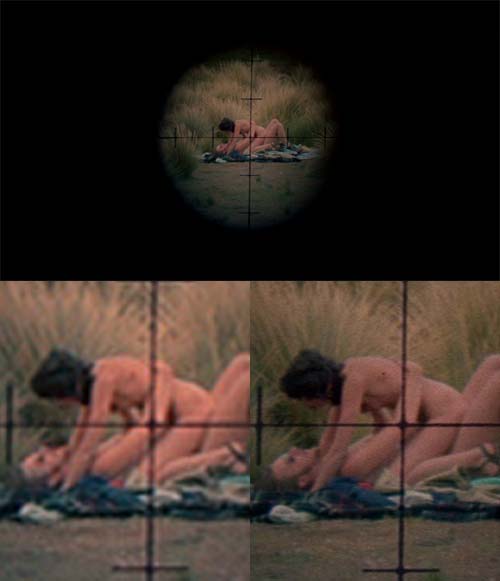
And check out the power pole and the headlight on the pursuit car, plug general clarity and sharpness:
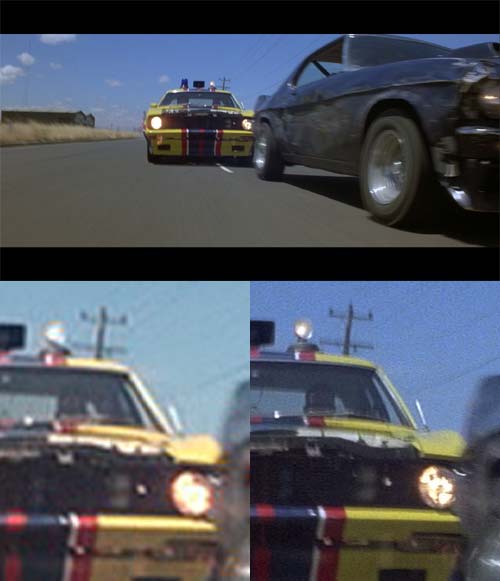
Nothing like a still life to illustrate the difference. With the DVD everything smears into an indistinct mess, whereas each element stands out on the Blu-ray, clear and coherent. Is that a little jar of pickled onions at bottom right?

This section was actually stable from one frame to the next, except for the speeding motorbike and a couple of people in the background, so I was able to deinterlace only those sections. So what we see at bottom left is the DVD at maximum resolution, which clearly isn't a patch on the Blu-ray:

